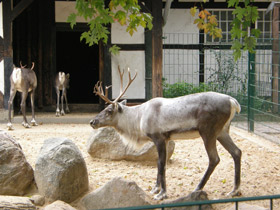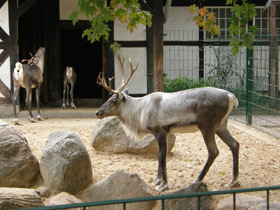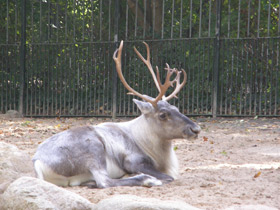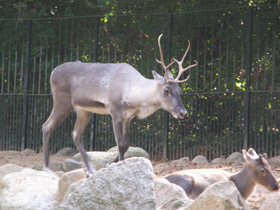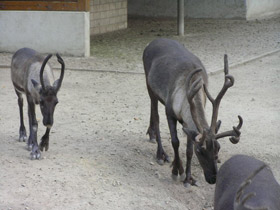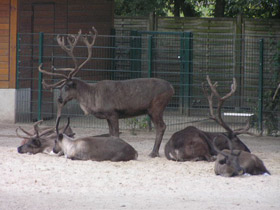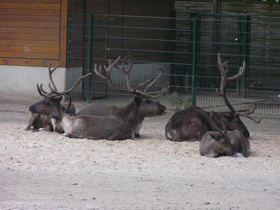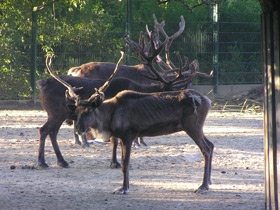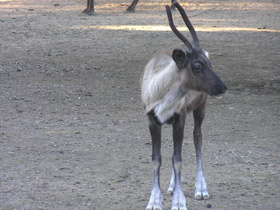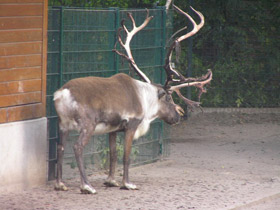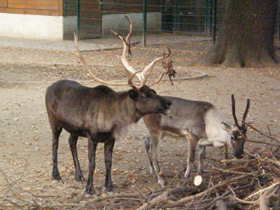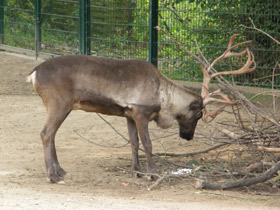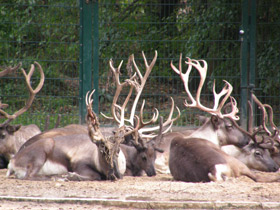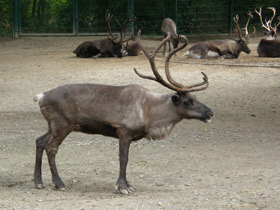The reindeer (Rangifer tarandus)
Reindeer видео
The reindeer (Rangifer tarandus), also known as the caribou in North America, is the only member of the genus Reindeer (Rangifer). The reindeer’s range covers northern parts of Eurasia and North America. These deer consume not only grasses and lichens but also small mammals and birds. Reindeer have shoulder height of up to 140 cm, their total length ranges from 200 to 220 cm and weight can reach 200 kilograms. The reindeer are found in tundra and coniferous taiga, both in lowlands and mountains. In winter, reindeer migrate from tundra further to the south. They gather in large herds formed by small groups and disperse again in their wintering grounds. Reindeer are able to dig down through the deep snow (up to 120 cm) to their food, but they need to spend too much energy while doing it and therefore prefer to seek the areas with low snow cover. Lichens make up 90% of their diet and reindeer can detect the smell of their favourite food, reindeer lichen, even under deep snow covering. Lichen compounds consumed by the reindeer kill many intestine parasites. Due to frequent migrations of the reindeer, lichen communities have time for recovery. Apart from reindeer lichen, these deer can also survive on other food, such as various plants (brushwood, certain types of grass), roots, berries, and mushrooms, and may even chew on their own shed antlers and drink salty water when they lack salt. Broad hooves allow the reindeer to travel across the crumbly snow and dig for food in the snow. The reindeer are used to getting the moisture they need by eating snow which they do during nine months per year. The reindeer coat with an inner layer of dense fur keeps the animal warm in cold winters. Reindeer have hollow hair that serves as an expellant insulator and helps the animals keep afloat when they walk across the river. The reindeer is the only species of deer in which both males and females have antlers. The females use their antlers to drive their competitors away from the food that they have found, and shed them after they have given birth to their offspring. During breeding season the reindeer gather in mixed herds consisting of one stag, about 15 females and several calves. Gestation lasts 192 to 240 days. The calf weighs about 6 kilograms at birth and can stand up in the same day. Baby reindeer can energetically run around on its second day of life and swim across a broad river by the age of one week. The calves feed on the thick fatty milk of their mothers during 3 to 4 months, and may not separate from the mother until they are 3 to 4 years old.
Reindeer have been domesticated in Eurasia. They have an important economic role for all circumpolar peoples, providing them with food and vital materials. Domestic reindeer are kept under semi-wild conditions and differ from their wild counterparts in that they have become accustomed to people and in case of danger would gather in tight group seeking protection from the herders rather than running in different directions. Reindeer provide people with milk, meat, fur, antlers, and bones and are used as draft animals, while all they need from the people are salt and protection from predators.

















